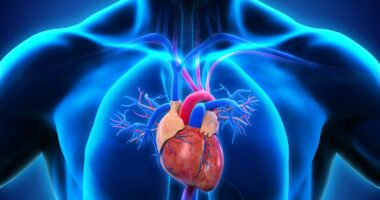Most people with DM1 develop cardiac problems: Danish study
Holter monitoring, echocardiography could ID what ECG misses, say scientists
by |

Most people with myotonic dystrophy type 1 (DM1) develop heart problems, according to a Danish study that followed patients for about 10 years.
“Life-long cardiac screening is crucial, and we recommended that repeated follow-up is performed,” its researchers wrote in “Natural history of cardiac involvement in myotonic dystrophy type 1 – Emphasis on the need for lifelong follow-up,” which was published in the International Journal of Cardiology.
DM1 is the most common form of adult-onset muscular dystrophy and caused by mutations in the DMPK gene. It’s characterized by myotonia — when muscles are unable to relax after a contraction — and muscle weakness, and may affect the muscles in involuntary body processes, including the heart.
A large proportion of DM1 patients have heart involvement, including arrhythmias, or abnormal heart rhythm, left ventricle dysfunction, and sudden cardiac death. But “due to the patients’ often limited functional capacity, symptoms may be masked,” said the scientists, who noted this underscores the importance of better heart health screening. “Current screening protocols are not evidence-based and few studies have evaluated the long-term yield of such programs.”
While electrocardiography (ECG) was the most sensitive method for identifying heart issues, adding Holter monitoring and echocardiography let other cardiac problems missed with ECG be identified.
Here, researchers in Denmark monitored 195 patients recruited from several cardiology departments to know more about heart involvement in DM1 and establish an evidence-based screening program. The median follow-up was 10.5 years. At the initial evaluation, the participants had a mean age of 40.6 (range, 14-79) and most were male (52.3%).
DM1 and heart problems
The patients were recommended for a cardiac evaluation at their diagnosis. It was performed by evaluating the heart’s electrical activity using ECG and Holter monitoring, and by assessing the heart with live images through echocardiography. Overall, 17.2% had cardiac symptoms, mainly palpitations and fainting. About a quarter had coexisting conditions, including high cholesterol levels (18%), diabetes (11.9%), and high blood pressure (8.8%).
At the end of the follow-up, almost half had heart involvement (49.1%), about double the 24.2% at the first evaluation, or baseline. ECG parameters showed worsening, with conduction disorders, which affect the electrical system of the heart, becoming more common during follow-up. Cardiac involvement was significantly more frequent in males than females at the end of the follow-up (73.5 vs. 57%).
Holter monitoring identified heart issues in 14.2% of the patients at baseline and in 19.5% at the study’s end. This difference wasn’t statistically significant, however.
Echocardiography identified an increase in cardiac involvement during follow-up (23.8% vs. 11.1% at baseline), particularly in left ventricle ejection fraction (LVEF) equal to or lower than 50%. LVEF refers to the amount of blood pumped out to the body by the heart’s left ventricle each time it contracts.
Taking all the diagnostic modalities together, the most frequently detected issues were conduction disorders (47.9%) and arrhythmias (35.4%). More than half the participants (56.9%) had one or both of these issues at the end of follow-up.
At the end of the study, 25.3 of the patients were being treated with at least one cardiovascular drug. Also, 16% had a cardiac device implanted and/or ablation, which is a treatment for arrhythmia that blocks faulty heart signals by creating tiny scars.
“Our data support that … ECG is the most sensitive diagnostic modality, but also that sole reliance on the ECG would miss a considerable proportion of patients with cardiac involvement,” the researchers wrote. “Addition of Holter and echocardiography to the ECG increases the diagnostic yield.”
Thirty-five patients (17.9%) died during the study. Fourteen died due to aborted sudden cardiac death or sudden cardiac death, defined here as unexpected, nontraumatic death of unknown or cardiac cause. The most frequent cause of death that didn’t have a cardiac cause was infection, mainly pneumonia.
This indicates that “all-cause mortality remains high despite cardiac screening, which underlines the need [for] improved risk stratification and multidisciplinary care,” the researchers said.








